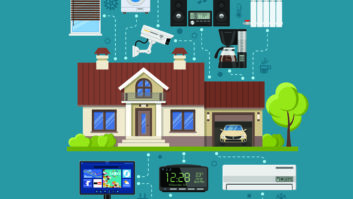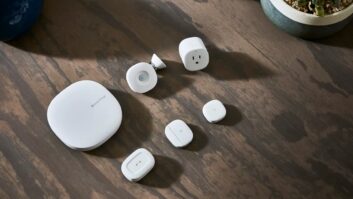Smart home technology is becoming increasingly mainstream, but there remains a significant segment of consumers who are still on the fence about whether they should take the leap. Why? Because despite manufacturers’ claims of simplicity and ease of use, getting started with any new technology can feel overwhelming.
When technology overload feels like it complicates life more than it helps, it’s hard to see the advantages. No one wants to struggle to understand how something works, and fumbling with complex installation takes away the enjoyment of the innovation. One bad experience might even turn a customer away from all smart home technology in general, no matter how valuable the purported benefits.
If you have a customer that is hesitant to invest in smart home technology, you should let them know that they could be missing out on some fantastic conveniences and even some money-saving opportunities. To help alleviate any apprehension over complexity, here are five tips for keeping it simple and smart.
1 Consolidate: Rather than buying multiple, single-purpose products, consumers should invest in multi-function technologies that combine several features into one product. For example, most people no longer need a cellphone and stand-alone GPS system for their car; a smartphone does both (along with plenty of other handy features!). Lightbulbs that incorporate built-in speakers can provide whole-house entertainment without added clutter. They could also invest in a good, all-in-one remote to make home entertainment easier. Or …
2 There’s probably an app for that: Much of today’s smart technology doesn’t even require a remote — smartphone apps for many products leverage customers’ mobile devices and allow them to customize and control all of their technology from the device they probably already use the most anyway. Turn lights off and on, arm a security system, even control a TV and DVR favorite shows from anywhere, all from most any smartphone.
3 Go wireless: Whenever possible, steer customers clear of technology that requires cords or separate chargers. Instead, suggest using Wi-Fi and Bluetooth technology to not only help reduce the eyesore of tangled cords and tripping hazards, but also make installation extremely easy. For example, if a customer is thinking about installing security cameras, suggest options like an LED lightbulb that incorporates a wireless HD camera inside. This two-in-one product means they’ll get full-time monitoring, simple wireless setup and a multifunction device that reduces clutter.
4Reduce waste: Technology is supposed to save you time and money, not cost you more. Stock products that are both energy efficient and that can help the consumer be more productive every day; for example, LED lightbulbs that have built-in energy tracking technology and smartphone operation. This allows the user to program lights to turn off automatically in case they forget, and lets you see how much they’re saving on your energy consumption in the process.
5 Shop savvy: When it comes to technology, many people assume that in order to get the best features and quality, they have to spend big bucks. While that used to be true, today’s economy of scale and availability of highly reliable electronic components means that they can get high quality features at lower, more affordable costs. The smart move is to invest and suggest technology that you know they will use, and that offers the best value and longevity.
Investing in smart home technology doesn’t have to feel like it requires a crash course in electrical engineering. In fact, the best products are the ones that virtually disappear into the background of a consumer’s life, providing benefits that they never even knew they needed without a bunch of hassle and maintenance. By choosing products that are designed to reduce complexity, getting the smart home of their dreams couldn’t be simpler.
Megan Johnson is a Denver-based marketer with extensive background in media relations and communication strategy. She’s worked in both agency and in-house environments to ignite buzz around innovative consumer and tech products, and currently leads marketing communications at Sengled, a manufacturer of smart lighting.












